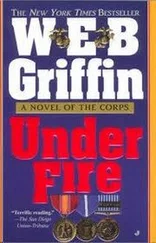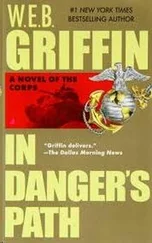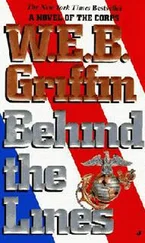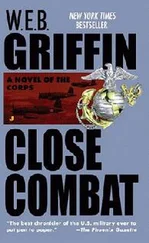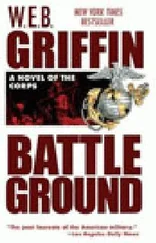W.e.b. Griffin - The Corps II - CALL TO ARMS
Здесь есть возможность читать онлайн «W.e.b. Griffin - The Corps II - CALL TO ARMS» весь текст электронной книги совершенно бесплатно (целиком полную версию без сокращений). В некоторых случаях можно слушать аудио, скачать через торрент в формате fb2 и присутствует краткое содержание. Жанр: prose_military, на английском языке. Описание произведения, (предисловие) а так же отзывы посетителей доступны на портале библиотеки ЛибКат.
- Название:The Corps II - CALL TO ARMS
- Автор:
- Жанр:
- Год:неизвестен
- ISBN:нет данных
- Рейтинг книги:4 / 5. Голосов: 1
-
Избранное:Добавить в избранное
- Отзывы:
-
Ваша оценка:
- 80
- 1
- 2
- 3
- 4
- 5
The Corps II - CALL TO ARMS: краткое содержание, описание и аннотация
Предлагаем к чтению аннотацию, описание, краткое содержание или предисловие (зависит от того, что написал сам автор книги «The Corps II - CALL TO ARMS»). Если вы не нашли необходимую информацию о книге — напишите в комментариях, мы постараемся отыскать её.
The Corps II - CALL TO ARMS — читать онлайн бесплатно полную книгу (весь текст) целиком
Ниже представлен текст книги, разбитый по страницам. Система сохранения места последней прочитанной страницы, позволяет с удобством читать онлайн бесплатно книгу «The Corps II - CALL TO ARMS», без необходимости каждый раз заново искать на чём Вы остановились. Поставьте закладку, и сможете в любой момент перейти на страницу, на которой закончили чтение.
Интервал:
Закладка:
A moment later, McCoy showed up in person.
"I thought you would want to know what we're facing, sir," he said, and pointed out on Carlson's map the locations of four Japanese water-cooled machine guns, two grenade launchers, and a flame thrower.
"They got riflemen, a bunch of them, filling in the blanks in the line," McCoy said, pointing, "and snipers in the tops of most of the coconut trees along here."
"You didn't want to send a runner?"
"I didn't have one handy that I trusted with a map, sir," McCoy said.
"Well, then, Lieutenant, you can just keep running. Go find the Baker Company commander and tell him I said to get moving, down the island."
"Aye, aye, sir," McCoy said, and ran off.
In the next four hours, a procession of runners reported that Baker Company was making slow but steady progress down the island.
At 1130, two Japanese Navy Type 95 reconnaissance planes appeared over the island, flew back and forth for fifteen minutes, dropped two bombs, and then flew away. Carlson knew that meant the Argonaut and the Nautilus, essentially defenseless against aircraft, had dived, and there was no longer any reason even to try to raise them on the radio.
The Nautilus surfaced again at 1255, but immediately dived again after their radar detected a flight of twelve aircraft approaching the island. The submarines would remain submerged until 1830 hours.
At 1330, the Japanese aircraft arrived over Butaritari Island. It was quite an armada: two four-engined Kawanishi flying boats (bombers); four Zero fighters; four Type 94 reconnaissance bombers; and two Type 95 seaplanes. They promptly began to bomb and strafe the Raiders, and they kept it up for an hour and a half, but without doing much real damage.
Then, apparently convinced they had wiped out whatever antiaircraft capability the Raiders might have had, one of the four-engined Kawanishis and one of the Type 95s landed in the lagoon. They were promptly engaged by.30-caliber Raider machine-gun fire. The Type 95 caught fire. And the Kawanishi hurriedly taxied out of.30-caliber range and began to discharge its passengers-thirty-five Japanese soldiers intended to reinforce the Butaritari garrison-apparently oblivious to the fact that a slow but steady fire from a Boys.55-caliber antitank rifle was being delivered.
When the Kawanishi made its takeoff, it almost immediately entered into a series of violent circling maneuvers. The last of these sent it, with an enormous splash, into the lagoon.
The Japanese aircraft that remained over Butaritari then left, but more Zeros returned at 1630 and bombed and strafed the island for another thirty minutes. From the way they were flying and choosing to drop their bombs, it was evident to Carlson that there was little if any communication between the Japanese defenders of Butaritari and the aircraft that came to their assistance: The Zeros were attacking a portion of the island he had ordered the Raiders out of (to better counter Japanese sniper fire). And the Japanese had promptly moved into this position. The Zeros were consequently attacking Japanese positions and troops.
By 1700, Carlson understood that he had an important decision to make. He had two options. His mission was to destroy enemy forces and vital installations, and to capture prisoners and documents. So far, the Raiders had killed a number of Japanese, but there were no prisoners, no documents, and no serious damage to installations.
Choice One was to continue his advance.
But the operations plan called for the Raiders to evacuate Butaritari at some time between 1930 and 2100. And it also called for attacking Little Makin Island the next morning.
Choice Two was to hold his present position and make a very orderly withdrawal by stages to the beaches, the boats, and ultimately the submarines. If he did that, he would be in a position to attack Little Makin on schedule. After some thought, he decided that made the most sense.
By 1900, Carlson had established (under his own command; he felt it his duty to be the last Marine off the beach) a covering force for the disengagement, and the bulk of the Raiders were on the beach, loading the rubber boats for the return to the submarines, which had surfaced at 1845, and were now prepared to cover the withdrawal with Naval gunfire in addition to taking the Raiders aboard.
But now he was facing another enemy, the sea. The surf, which had posed no serious problems as they landed, now wouldn't let them off the island. This came as a surprise; for the waves were not especially large. And until he actually got in them, he didn't see what the problem was. They were moving very fast, and succeeding waves piled in very quickly. The trouble was that the waves were crowded too close together for the boats to operate.
Raiders walked their boats into the surf, and they generally managed to get past the first four waves without trouble. But then the agony started. Only a few of the outboard engines could be made to start, and those that they did get running were quickly drowned as waves crashed over the bows of the rubber boats and soaked coils and points.
After that, the Raiders tried paddling.
But paddling rhythmically and furiously for all they were worth, the Raiders could not make it past the rollers coming into the beach; they would make it over one roller only to be hit and thrown back by the next before they could gain momentum.
Boats filled to the gunwales. The Raiders bailed furiously. Then they loosened the outboard motors and dropped them over the side. And then they got out and pulled the boats by their own efforts, by swimming.
Surf turned boats over, which sent the Raiders' weapons, ammunition, and equipment to the bottom. But even empty, it was impossible to get the boats past the wave line.
After an hour, Carlson ordered back to the beach everybody that had not made it through the close-packed waves. When he got there, he found that less than half of the boats had made it through the surf. Thus more than half of the Raiders were still on the beach, and they were exhausted. Most of them had lost their weapons and equipment and rations. And there were a few wounded men, including four stretcher cases. These then were in pain, and obviously in no condition to keep trying to get off the beach.
So Carlson ordered all the boats pulled well up on the shore. He collected what weapons there were, set up a perimeter defense, and did what he could for the wounded. Then he formed teams to keep trying (it was possible that the surf was a freak condition, which would pass) to get through the surf, one boat at a time.
Carlson conducted a nose count. There were 120 Raiders still on the beach. And then, as if to suggest that God was displeased, it began to rain.
As soon as daylight made it possible, the Raiders tried Carlson's idea of forcing their boats through the surf one at a time. When one boat made it, another tried, and when it made it, then another tried. The wounded, Carlson knew, could not be extracted this way, and he would not leave them. He therefore ordered Captain Roosevelt into one of the boats so he could assume command of the Marines on the submarines. When he was sure Roosevelt had made it, he ran another nose count. Now there were seventy then on the beach.
At 0740, five Raiders aboard the Nautilus volunteered to take a boat with a working motor as close to shore as it could manage. Then one of the Raiders swam ashore from it with a message from Commander Haines that the subs would lay off the island as long as necessary to get the Raiders off the beach.
Then Japanese Zeros appeared. And the subs made emergency dives. The Japanese strafed the beach, and then turned their attention to the rubber boat with its volunteer crew. Nothing more was ever seen of it-or of them.
When Roosevelt, whose rubber boat had been the fourth and last to make its way through the rollers, started counting noses aboard the Nautilus, he came across Lieutenant Peatross and the remaining eight of the then who had been with him in his rubber boat during the initial landing.
Читать дальшеИнтервал:
Закладка:
Похожие книги на «The Corps II - CALL TO ARMS»
Представляем Вашему вниманию похожие книги на «The Corps II - CALL TO ARMS» списком для выбора. Мы отобрали схожую по названию и смыслу литературу в надежде предоставить читателям больше вариантов отыскать новые, интересные, ещё непрочитанные произведения.
Обсуждение, отзывы о книге «The Corps II - CALL TO ARMS» и просто собственные мнения читателей. Оставьте ваши комментарии, напишите, что Вы думаете о произведении, его смысле или главных героях. Укажите что конкретно понравилось, а что нет, и почему Вы так считаете.

